You're using an outdated browser. Please upgrade to a modern browser for the best experience.
Please note this is a comparison between Version 1 by Yudong Zhang and Version 2 by Jason Zhu.
Artificial Intelligence (AI) technologies have been powerful solutions used to improve food yield, quality, and nutrition, increase safety and traceability while decreasing resource consumption, and eliminate food waste.
- artificial intelligence
- food safety
- authorship
1. Introduction
Artificial intelligence (AI), as a far-reaching emerging technology, has experienced birth, ups, and downs, and the harvest, not only impacting our personal lives but also essentially transforming how firms make decisions [1]. Machine learning (ML) is currently a main branch of AI, integrating probability theory, statistics, and convex optimization to resolve the problems of computer vision, speech recognition, natural language processing, robot control, etc. [2]. Compared to other ML techniques, deep learning (DL) reveals excellent performance in image recognition, speech recognition, molecule prediction, particle accelerator data analysis, brain circuit reconstruction, etc. [3]. It is known that AI has three pillars, namely, data, algorithms, and computing power. By contrast, the food safety system has arisen as one of the most important application scenarios that use data-intensive approaches to drive the sustainable development of human beings and minimize its environmental impact.
Food safety is extremely important for human health and survival and deserves more advanced technologies to protect both consumers from foodborne illness and firms from reputational damage [4]. AI and big data, regarded as the fourth industrial revolution, already have a significant impact on the food industry by increasing food production, quality, and nutrition, and reducing resource consumption and waste [5]. Furthermore, recent studies have explored AI-based methods to deal with dietary problems that usually lead to chronic diseases such as hypertension [6].
2. Current Status of Al Research
2.1. Annual Trends
A number of publications have been released since 2019, as shown in Figure 1, indicating explosive interest in this subject. Due to the constant progress of AI technology, more and more applications are being employed to predict crop yields, control food quality, and reduce foodborne illness. The increasing trend seems set to continue, and more studies may emerge.
Figure 1. Al-related publications on food safety from 2012 to 2022.
2.2. Distribution of Publications
Figure 2 shows the analysis of the discipline category of the literature pieces. After analysing the discipline categories of all the selected pieces of literature, the top five discipline categories with the highest number of publications were food science technology (410 articles), environmental sciences (280 articles), remote sensing (215 articles), nutrition dietetics (193 articles), and imaging science information systems (179 articles). This indicated that the interdisciplinary integration characteristics of AI in food safety were evident. Furthermore, these results implied that the research on AI had expanded into various fields. However, there are still some significant gaps in the depth and breadth of these fields.
Figure 2. AI-related publications in different discipline categories.
2.3. Publication Timeline
In order to specifically describe the research on AI in food safety, researchers chose the five most popular subfields and then drew the publication timeline, as shown in Figure 3. The annual publications in these five fields presented a gradually increasing trend from 2012 to 2022, but the number of published papers before 2018 fluctuated to varying degrees. Since 2018, three fields, namely food science technology, environmental sciences, and nutrition dietetics, have been growing rapidly. This trend meant rapid expansion and recent advances in AI technologies. In addition, researchers noticed a declining trend in the fields of remote sensing, imaging science, and photographic technology after 2021. In summary, although AI in food safety increased attention in general, there were still significant differences in each subfield concerning AI development.
Figure 3. Annual publications within the five most popular subfields.
3. Co-Citation Analyses
3.1. Author Co-Citation Analysis
Author co-citation analysis depicted the co-citation author network generated by CiteSpace to show the interrelationships among cited authors and identify the authors with strong influence [7][31]. Figure 4 demonstrates the co-citation network of AI in food safety research during 2012–2022. To show the author co-citation network clearly, researchers just displayed the authors with the most cited references in each time slice. There were 421 nodes and 1892 links in the author co-citation network. These nodes were plotted with citation tree rings containing several time slices. The citation tree rings’ thickness indicates the authors’ citation frequency in the corresponding time slice.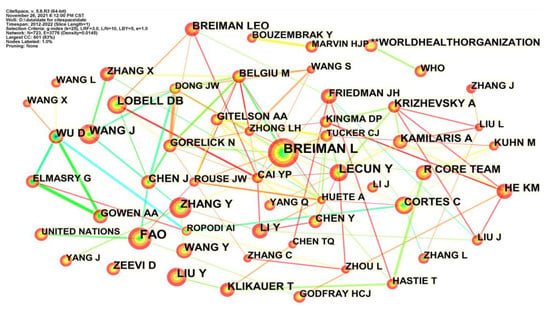
Figure 4. The author co-citation network of AI-related publications.
3.2. Reference Co-Citation Analysis
Reference co-citation networks represented the structure and development of a field in detail, which was composed of the nodes and connections among co-cited references [8][32]. The reference co-citation network from 2012–2022 is shown in Figure 5, containing 622 effective nodes and 2264 links. Every node in Figure 5 showed an article cited by other literature, while the links represented their co-cited relationship. These nodes were also displayed in terms of tree rings to show the citation frequency of an article. The thickness of citation tree rings indicates the citation frequency of these articles in the corresponding time slice. The thickest nodes with tree rings indicate the most important references and lay out the starting point of related research. The article with the thickest citation rings, published in Remote Sensing of Environment, introduced Google’s powerful computing capability and bravely solved many social problems such as diseases, food security, and water resources management [9][33]. The highest citation frequency also indicated that the application of remote sensing technology in food safety had been one of the hot issues in recent years.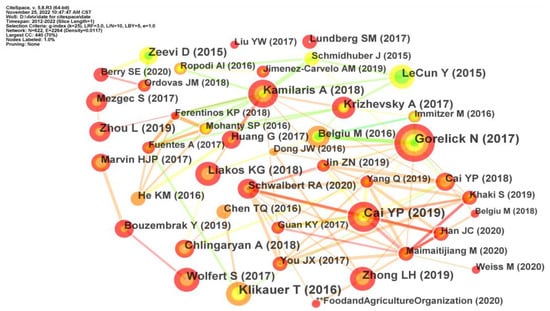
Figure 5. The co-citation network of AI-related publications.
3.3. Citation Burst Analysis
Citation burst analysis [10][34] was used to search the representative articles with high citation growth rates. A citation burst is an abrupt increase in citations for an article. For example, if the article’s citations suddenly increased in recent years, this reference had a strong citation burst [11][35]. As shown in Figure 6, the articles with strong influences signified the new pivotal turning points in the subfield research and indicated profound prospects and future trends. The red lines represented the time range of a reference citation burst, and the strength index meant the citation growth rate.
Figure 6. Starting point literature in related subfields.
3.4. Journal Co-Citation Analysis
Journal co-citation analysis revealed the structure and distribution of knowledge by displaying the network of the co-cited journals. As shown in Figure 7, there were 30 journals containing 159 effective nodes and 845 links. Every node represents a journal in the datasets. These nodes were plotted in terms of tree rings to show the citation frequency of a journal. The thickness of the citation tree rings indicates the citation frequency of these journals in the corresponding time slice. The links between these nodes display the co-citation relationships of different journals. The most frequently cited journals among the selected datasets are PLoS ONE, Computers and Electronics in Agriculture, Nature, Remote Sensing, and Scientific Reports. From 2019 to 2022, the growth rate of citations of these five journals was significantly higher than before, as shown in Figure 8.
Figure 7. The journal co-citation network of AI related publications.
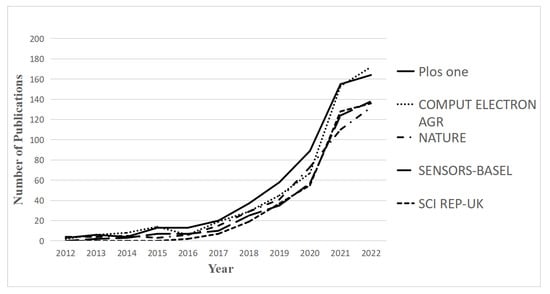
Figure 8. The number of co-citation articles of the top 5 journals in 2012~2022.
4. Co-authorship Analysis
The institute and country co-authorship network revealed the cooperative relationships among different countries and academic units [26][48]. As shown in Figure 9, there were 391 effective nodes and 582 links, including the top 50 institutes. These nodes were plotted in terms of tree rings—the thicker the tree rings, the more active the institutes. As shown in Figure 10, the top five institutions in terms of the number of publications were Chinese Acad Sci, Univ Chinese Acad Sci, China Agr Univ, Zhejiang Univ, Chinese Acad Agr Sci, etc. The results of co-analysis by institutions and countries indicated that China had paid much attention to AI applications in food safety.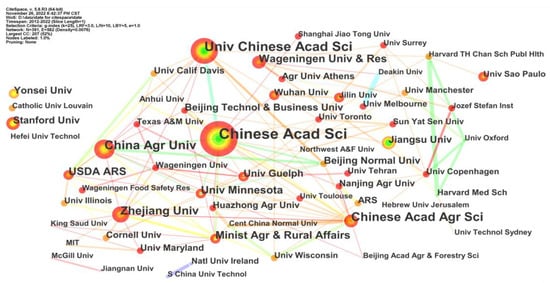
Figure 9. The institute co-authorship network of AI-related publications.
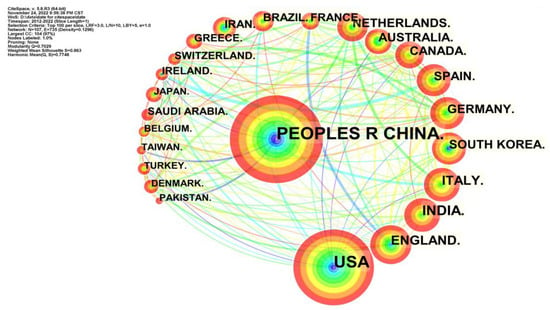
Figure 10. The country co-authorship network of AI-related publications.
